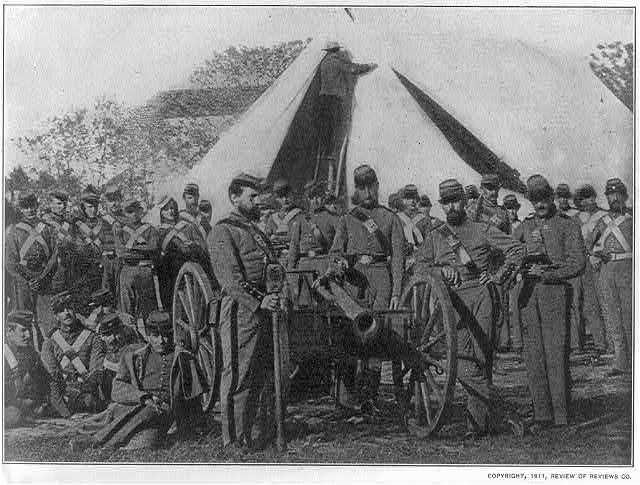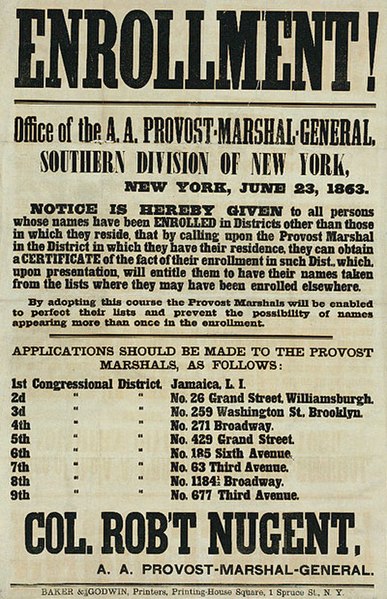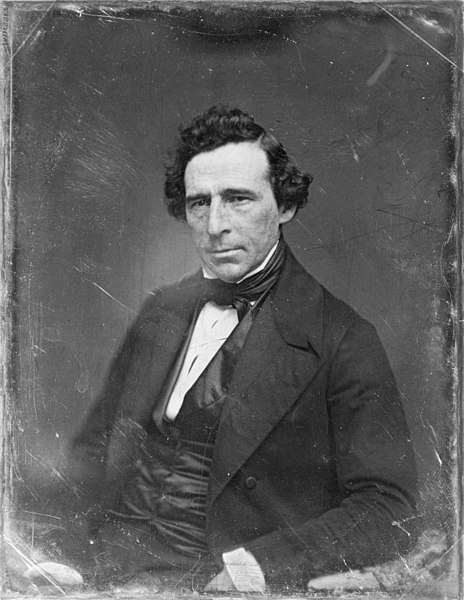7th New York Militia Regiment
The 7th Regiment of the New York Militia, aka the "Silk Stocking" regiment, was an infantry regiment in the Union Army during the American Civil War. Also known as the "Blue-Bloods" due to the disproportionate number of its members who were part of New York City's social elite, the 7th Militia was a pre-war New York Militia unit that was mustered into federal service for the Civil War.
The artist depicted a patriotic, flag–festooned scene as the regiment passed in review on Broadway before Major Robert Anderson.
The New York Seventh in Washington, D.C., 1861.
New York 7th Regiment soldier about 1861
The 7th Infantry in New York during the Civil War (photography by Mathew Brady).
New York City draft riots
The New York City draft riots, sometimes referred to as the Manhattan draft riots and known at the time as Draft Week, were violent disturbances in Lower Manhattan, widely regarded as the culmination of working-class discontent with new laws passed by Congress that year to draft men to fight in the ongoing American Civil War. The riots remain the largest civil and most racially charged urban disturbance in American history. According to Toby Joyce, the riot represented a "civil war" within the city's Irish community, in that "mostly Irish American rioters confronted police, [while] soldiers, and pro-war politicians ... were also to a considerable extent from the local Irish immigrant community."
An illustration in The Illustrated London News depicting armed rioters clashing with Union Army soldiers in New York City
A recruiting poster in New York City in June 1863 for the Enrollment Act, also known as the Civil War Military Draft Act, which authorized the federal government to conscript troops for the Union Army
John Alexander Kennedy, NYC police superintendent from 1860 to 1870
Bull's Head Hotel, depicted in 1830, was burned after it refused to serve alcohol to the rioters.








